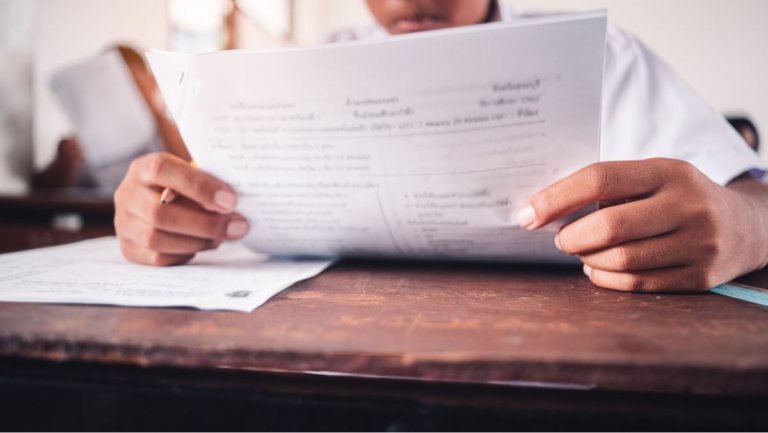
Just about every aspect of our life revolves around the written word, especially for students in school and university. This includes reading captions on Instagram to responding to texts via WhatsApp, shooting emails to companies for internship opportunities, and poring over textbooks and websites to help with one’s studies and assignments.
It’s clear that reading is so ingrained in our daily lives, but few would pause to think about how they could do it better.
However, PhotoReading – a reading strategy developed by Paul Scheele – is said to increase one’s reading rate to 25,000 words per minute. PhotoReaders are not only able to blast through text faster than the average reader but obtain information at a quicker pace.
Realistically, anyone who deals with vast amounts of words or information will find mastering such a skill useful, including students who have voluminous reading materials to go through, on top of their studying and assignments.
Going through a vast amount of text at lightning speed may raise eyebrows from skeptics, but advocates claim the skill is life-changing.
What is PhotoReading?
Speaking to Study International, Marilyn Devonish, a certified PhotoReading instructor of 17 years in the UK, explained that while PhotoReading and speedreading aim to do the same thing – which is to speed up one’s reading – PhotoReading entails tapping into the “greater abilities of your brain” and using multiple intelligences. Conversely, speed reading is more analytical, with speedreaders taught to move their eyeballs faster.
Speedreaders go through some 1,500 to 2,000 words per minute; the figure is over 20,000 for PhotoReaders. “The premise of PhotoReading is to get through written information more quickly, whilst being able to remember and recall what you have read,” explained Devonish, adding that PhotoReading is not about having a photographic memory either.
In a nutshell, PhotoReading involves five steps. Step one is called ‘prepare’, which involves getting into the right mental and physical state to PhotoRead. Step two is called ‘preview’, where readers briefly (about 60 to 90 seconds) go through the materials, such as its content pages. Step three, ‘PhotoRead’, is when readers engage in PhotoReading at 25,000 words per minute.
In step four, ‘postview’, readers survey materials that are important to them before proceeding to step five, called ‘activate’. Various techniques (e.g. Dipping, Skittering, etc.) sit under this final step, but it essentially involves steps to help you process and understand information.
Typically, Devonish’s students learn PhotoReading over a workshop that lasts two and a half days, but she has also had success with those who have had only a couple of hours to spare.
Stranger than fiction

Reading is so ingrained in our daily lives, but few would pause to think about how they could do it better. Source: Shutterstock
PhotoReading can be used for fiction and non-fiction reading materials, as well as content in print or on mobile devices. To the untrained eye, PhotoReading can seem very technical and complicated. However, Devonish says it’s easy enough to learn; she has successfully taught people across a range of ages, skills and abilities – including those with learning disabilities such as dyslexia.
Skeptics argue that reading 25,000 words per minute is a hoax, but Devonish points out that PhotoReaders don’t necessarily go through every single word within a text. “The human mind and the human brain has the capacity to make sense when it just has a few fragments of data,” she explained.
For instance, you might have come across memes circulating on social media where sentences or words have letters in the wrong order, or those in which letters are replaced by numbers.
Research notes that the human mind doesn’t read every letter in a word individually, but instead, as a whole. Some have words missing from the sentences, such as the word ‘the’, but our brains can read it as a complete sentence.
“Yuo cna porbalby raed tihs esaliy desptie teh msispeillgns.”
A report from Mother Nature Network explains: “Research has revealed that when we hear a sound that leads us to expect another sound, the brain reacts as if we’re already hearing that second sound. This is similar to the way the brain responds to an arrangement of letters or words. As your brain deciphered each word in the example above, it also predicted which words would logically come next to form a coherent sentence.”
Can students benefit from PhotoReading?

Worth a try? Source: Shutterstock
Whether or not PhotoReading benefits people has divided opinions. While some studies have discredited its benefits, there are still people who have found it useful.
Similarly, for Devonish, many of her clients have found it life-changing. She has taught primary, secondary and university-level students who struggled with their studies PhotoReading, and has had many success stories.
A family of five who flew in to the UK from Switzerland was happy to find that their daughter, who is usually extremely anxious and stressed prior to an exam, was calm and collected when sitting for her test following the PhotoReading workshop. Another student, a dyslexic with dyspraxia, also flourished after a one-on-one session with her.
Adults have also come to her for help with their exams. One policeman, who had failed his sergeant exam several times, was told by a superior that he might not be “sergeant material”.
“He’s been in the police force since he was a teenager and said that if he doesn’t become a police sergeant, he was going to quit the force and become a bouncer,” she said. He did a one-on-one session with Devonish for an hour and a half – her quickest session to date. Several weeks after his exam, he was ecstatic to discover that he was in the top 25 percentile in the UK.
So, would you try PhotoReading?
Liked this? Then you’ll love…
How to read your textbooks quickly and still get an A
Slow down your learning, it could speed up your understanding







